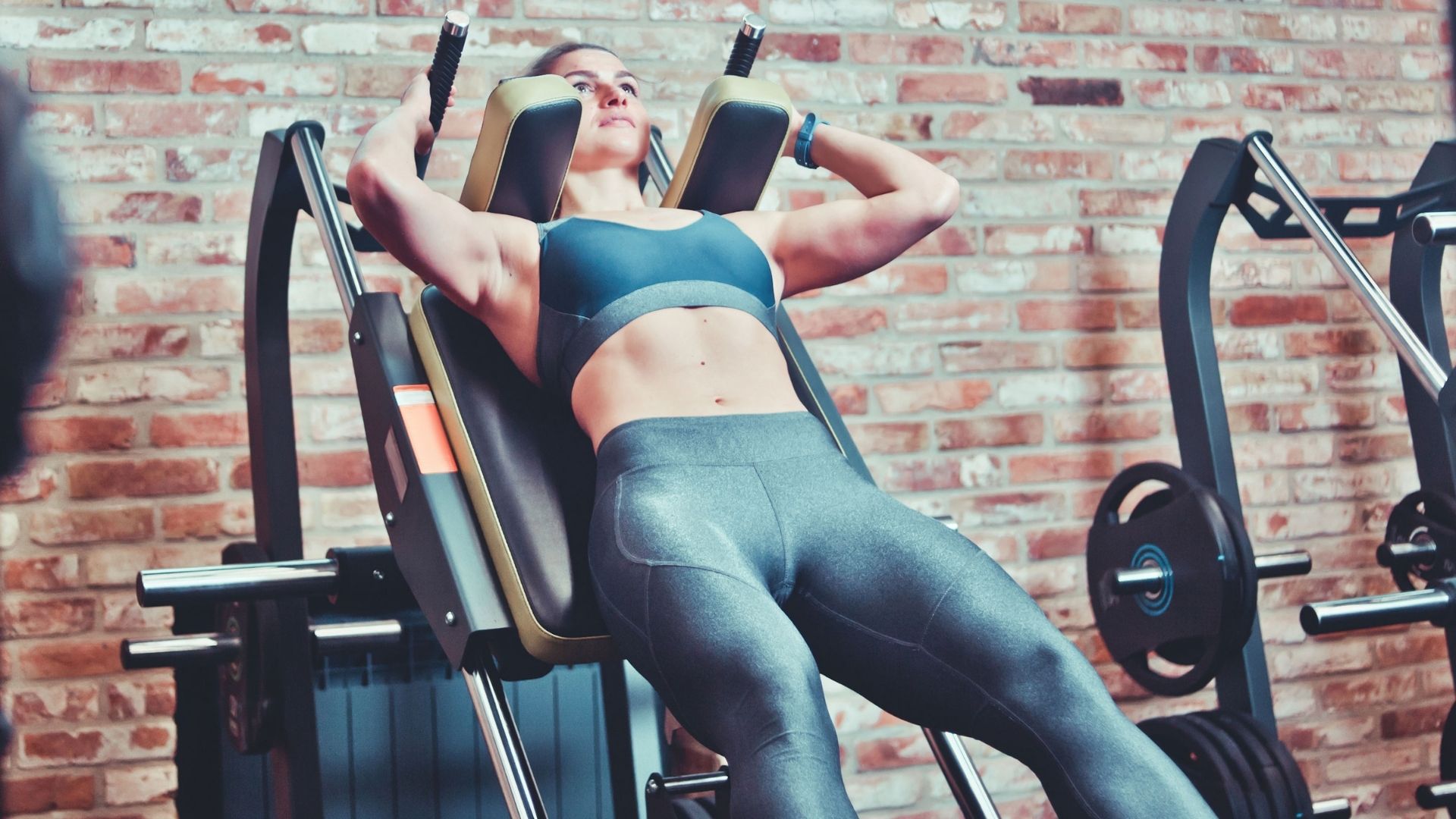
Sumo Deadlift: The Powerful Exercise for Full-Body Strength
The Sumo Deadlift is a controversial but excellent exercise for barbell strength.
What Is Sumo Deadlift?
Sumo Deadlift has a broader leg position than the traditional deadlift.
Instead of lifting with their hands outside the thighs as in the former, lifters exercise with them inside.
Sumo Deadlifts allow athletes to lift more weight due to their reduced range of motion.
How To Perform Sumo Deadlift: Step by Step Instruction
Sumo deadlifts are generally more difficult for many people.
It’s not an easy movement, however.
It’s not.
This is a step-by-step guide on how to do sumo deadlifts properly.
Step #1 The Set-Up
Begin by taking a broad stance and pointing your toes out slightly.
Your stance should be wide enough for your arms to reach inside your knees.
Individuals will have different stance sizes.
The athletes should have their shins parallel to the ground, their back flat, and their shoulders just above the bar.
Tip: Think of pulling your hips towards the bar while keeping your core tight and braced.
You should push your knees out wider to allow your torso to remain slightly higher than in a traditional deadlift.
Step #2 Pull The Slack Out Of The Bar
Once you are in position, tighten your core and back.
Pull up the bar slightly and press your legs into the floor.
Take a deep breath and find your ideal tension position.
Then, go on to step #3.
Tip: See the pressure rise in your body before pulling, and all muscles are engaged and ready for firing at once.
Step #3 Drive With Your Legs
Once you have positioned yourself correctly and there is no slack in your body or the bar, it’s time for you to pull the barbell.
This involves simultaneously driving through the feet while pulling up on the bars.
This is important because you don’t want the chest or hips to drop in the pull.
Instead, the barbell should stay close to your body while you stand.
Push through your heels while keeping your chest and hips in place.
Next, drive through your legs.
Tip: Hold your chest high and pull hard.
Keep your knees bent to avoid the bar from moving too far forward.
This can cause injury and disrupt your lift.
Step #4 Lock the Weight Out
The weight should now be rising on your legs.
The bar may pull you down or even stop moving.
Keep your chest up and not forward.
Push through your heels, then squeeze your glutes to bring the bar up to your hip level.
Tip: To finish the lift when the bar has reached your knees, squeeze your butt.
This will drive your hips forward and reduce the distance between the lift’s peak and the weight.
Sumo Deadlift Benefits
You can expect to integrate the benefits of sumo deadlift into your training program.
Comfortable Mechanicals
Sumo deadlift is a great beginner-friendly exercise.
Because of the narrower stance and shorter arm position, most people can lift slightly more weight than they can with standard deadlifts.
Some lifters believe that the sumo deadlift is cheating, especially in the powerlifting world.
The sumo deadlift is not cheating.
If a lifter has shorter arms and is shorter, the sumo deadlift might not be the best option.
Strengthening, Particularly At The Top
Sumo deadlifts are another variation of the deadlift that can increase muscle mass and pulling strength (similar to the trap bar deadlift).
You can do the sumo deadlift in many ways: with bands, manipulating your lifting speed, or adding a chain.
Sumo deadlifts allow for heavier loads to be lifted.
This allows you to overload your muscles with more than you’re comfortable lifting.
This new strength will help you finish the top portion of the lift faster once you return to the trap bar or conventional deadlifts.
Lower Back Strain
Sumo deadlifts are more vertical than the traditional deadlift.
This is due to the foot placement.
The sumo deadlift increases the vertical angle of the back, which means that the lower back isn’t as stressed as in conventional or Romanian deadlifts.
This is a good option for lifters who want to limit lower-back stress, monitor the training volume to the erectors, or address other aspects of the pull.
Quadriceps & Glute Strength
The sumo deadlift targets glutes more than any other deadlift due to its foot placement and hip/knee angles.
This is a great way to strengthen weak muscles or develop them for aesthetic purposes.
Muscles Worked By Sumo Deadlift
The sumo deadlift targets the following primary muscle groups:
Like other variations of deadlifts, the sumo deadlift works the glutes and hamstrings.
There are some differences in the muscles that the sumo deadlift works compared to the conventional deadlift and trap bar deadlift.
Glutes
Sumo deadlifts target the glutes significantly, with the feet being set wider and turned outwards.
External rotation places the hip in a position that involves the glutes.
Hamstrings
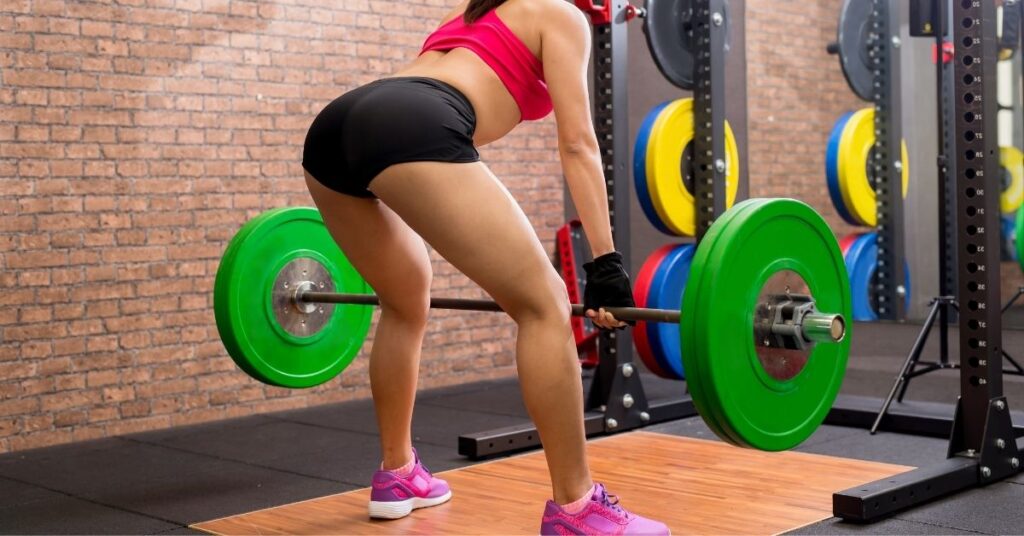
Although the Romanian and conventional deadlifts recruit them more aggressively than the traditional, the sumo deadlift still relies on the hamstrings.
However, if the lifter wants to focus more on their hamstrings, they might do Romanian Deadlifts.
Quadriceps
Sumo deadlifts require that the athlete achieve greater knee bend angles (bend) due to foot placement.
The quadriceps, responsible for knee extension, are targeted with greater intensity than the traditionally used Romanian deadlift.
However, they are similar to the trap bar deadlift.
This deadlift variation will have you squatting slightly more and using more of your thighs.
Erector Spinae (Lower back)
Lower back muscles (also known as the erectors) help to stabilize your spine during the pulling phase.
The spinal erectors, also known as the erectors, can be developed.
This is good because they are often the main limiting factor for heavy deadlifts (lower back strength).
The sumo deadlift is different from the traditional Romanian deadlifts.
Because the torso is higher than the back, it puts less stress on the lower back.
This allows other back muscles to take up some of the work.
Trapezius And Back Muscles
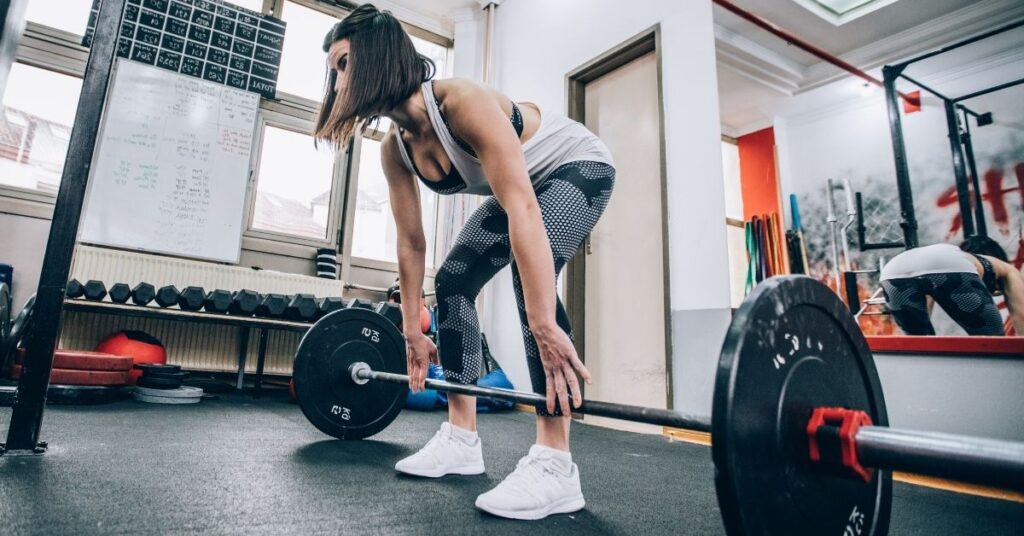
The upper back and trapezius muscles are essential to maintain proper torso positioning.
They also aid in the upwards pulling of the barbell.
Sumo deadlift is a stronger, more vertically pulling movement than the traditional deadlift.
It’s a great way to strengthen your traps and upper back muscles.
What’s the Difference between Sumo Deadlift and Conventional Deadlift?
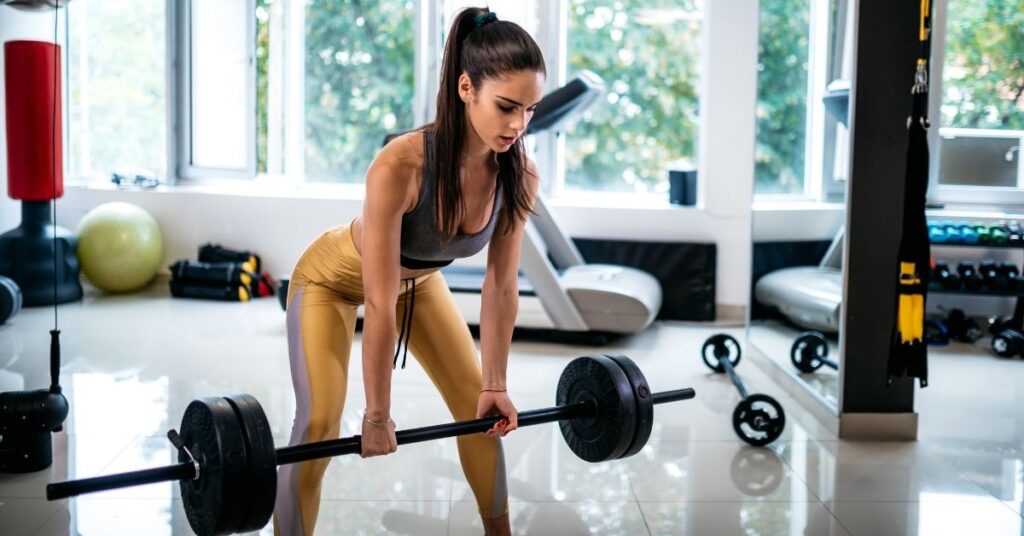
There are many differences between the Sumo Deadlift and the traditional.
These differences will allow you to know which variation is best for you based on your goals and body type.
The main differences between sumo deadlift and regular deadlift are stance, bar path, and muscle stress.
Stance

Sumo uses a wider stance than the traditional deadlift.
Bar Path
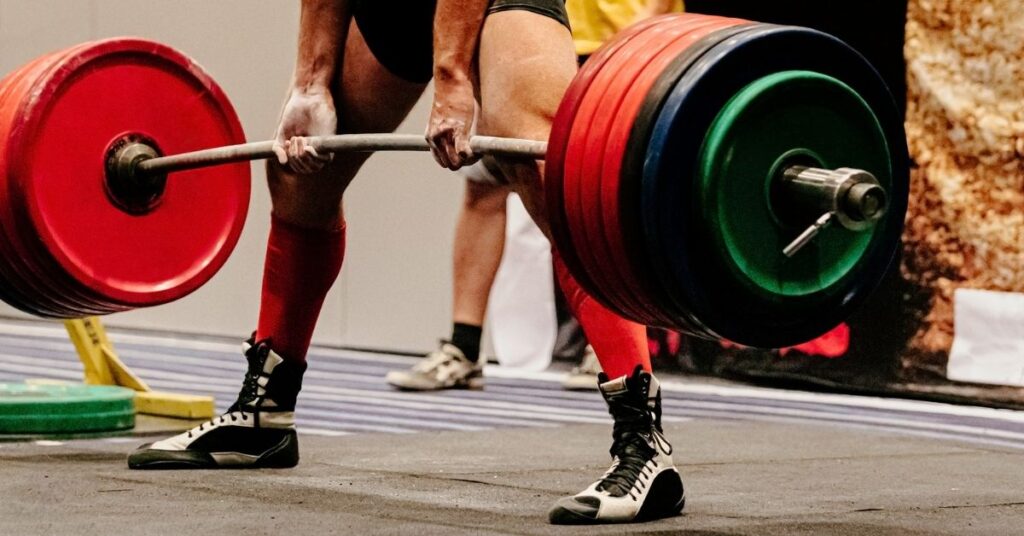
The Sumo Deadlift is shorter in bar path and has a broader range of motion than the traditional deadlift.
Muscle Stress

Sumo puts more strain on the quads and glutes than the traditional deadlift.
Sumo also puts more stress on the lower back (spinal levers).
Sumo Deadlift vs. Conventional Deadlifts?
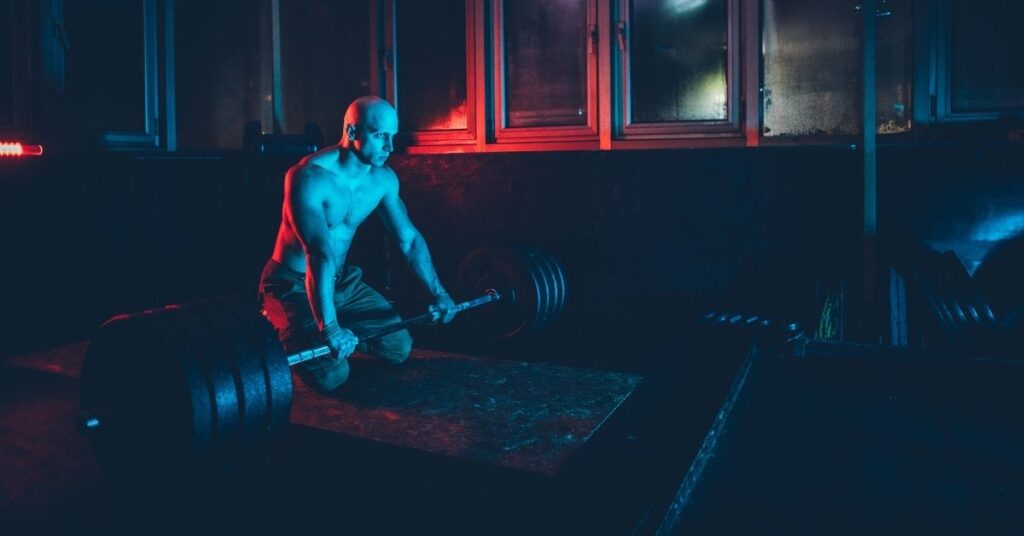
Both the sumo deadlift and traditional deadlifts are highly effective compound exercises.
It is easiest to decide which one you like by trying them both.
Both types can be trained for 2-3 months, and then you will see how you feel at the end.
Which feels more potent, more natural?
Find out which submaximal feels the best for you (about 70-80% of your 1RM) and 1RM attempts.
You will better understand how the movement fits your body and personal preferences.
You can also use lifts’ submaximal and one-return numbers to make inferences about your strengths and weaknesses.
Suppose your conventional deadlift feels more potent with submaximal loads, but your Sumo 1RM is more potent.
In that case, you can conclude that your back weakness is probable.
However, if your sumo deadlift performs better with submaximal loads but your conventional 1RM is lower, your quads may likely be weak.
Sumo Deadlifts may not suit lifters who have shorter arms and are on the shorter side.
Common Mistakes To Avoid When Performing Sumo Deadlift
Sumo deadlifts should be performed in proper form.
These mistakes can be avoided to make the most of this exercise.
Caving In Your Chest
During this exercise, keep your chest up.
Do not allow your chest to sink and your shoulders to turn.
Your shoulder blades should be retracted, back and down.
Your neck should not be bent forward.
Rounding Your Back
When lifting the bar, don’t let your back turn.
To avoid this, keep your shoulders back and your hips low until the bar is raised enough to raise them naturally.
You should not lift your hips to begin the exercise.
This can make your back round and cause you not to push your legs first.
Not Bending Your Knees Correctly
Sumo deadlifts are more than just a traditional deadlifts.
Sumo deadlifts are based on hip and knee movements.
As you bend your knees towards your feet, hinge your hips forward.
You must push your knees forward and not allow them to cave inward.
Sumo Deadlift Recommendations
How you do sumo deadlifts will be affected by why you’re doing it.
We mean the number of reps and man sets you to do and how heavy you lift.
Below are training guidelines that can help you prepare for various training scenarios.
These scenarios are not intended as a complete guideline for set and rep sets.
Better Deadlifting Mechanics
Sumo deadlifts can either regress from the traditional deadlifts or help beginner lifters learn proper hip extension and hip flexion mechanics in the deadlift.
Three to four sets of 8-10 repetitions, with light or moderate loads.
Do this at a controlled speed. Focus on lowering the weight and taking control.
Rest as necessary.
Coaches can include tempos and pauses in their pull to enhance movement awareness.
To Get Stronger
Sumo deadlifts can increase maximal strength in powerlifting or strongman athletes. Sumo deadlifts can be used to increase pulling strength and diversify lifting.
You should do three to five sets with heavy loading.
Rest as necessary.
Lifters can employ chains, chains, and other variations of the sumo deadlift (see more).
To Gain Muscle
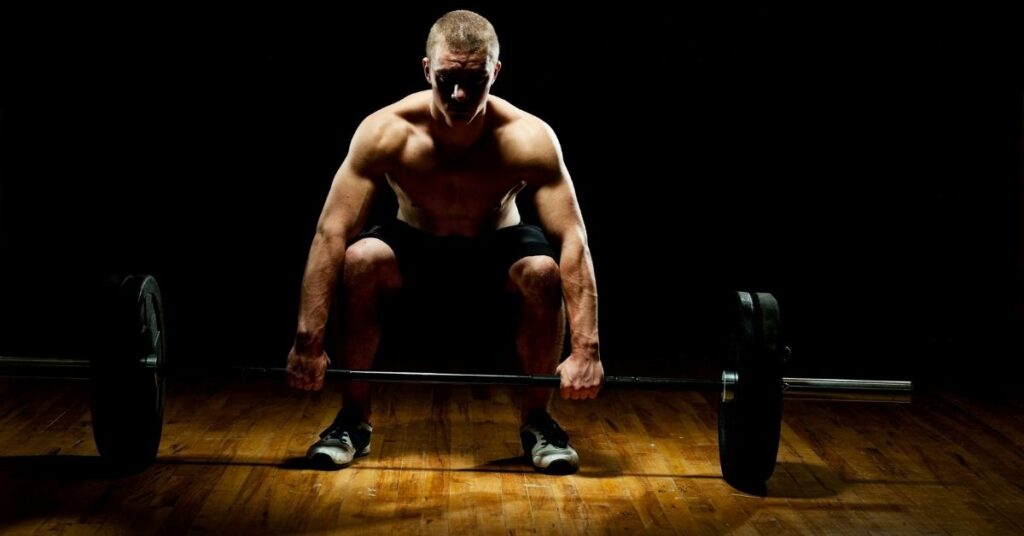
Sumo deadlifts can be performed at a higher volume and heavier loads to increase muscle hypertrophy, specifically in the muscles mentioned above.
These guidelines can be a great starting point for anyone who wants to grow.
You can do three to five sets of six- to ten reps with a heavy to moderate load.
You can also do two to four sets of 12 to 15 reps for a moderate load.
Your rest intervals should be between 45 and 90 seconds.
Tap and go reps are another option.
This is where you place the plates on the ground and then push them up again.
Do not drop the weight, and do the same rep again.
Tap and will increase the muscle’s time under tension.
To Build Muscular Endurance
Sumo deadlifts can be used to increase glute endurance and endurance.
Perform two to four sets with 12 to 20 reps and light or moderate load.
The rest interval must be in the range of 30 to 45 seconds.
Sumo Deadlift Alternatives
Sometimes, you may want to swap your sumo deadlift for another similar exercise.
Here are some exercises that you can try.
#1 Rack Pull
Rack pulling is an excellent alternative to the traditional deadlift.
However, the movement range is much smaller.
Rack pulling allows you to lift heavier weights off the barbell, which can help improve your form for performing the sumo deadlift.
It also helps to develop your lower back muscles.
Here’s how you do the rack pull:
- You will need a rack to adjust the safety bar to just above your knees.
- Grab the barbell in your hand and ensure you are at least shoulder-width apart.
- As you push your hips back, keep your core strong.
- To avoid injury, ensure your back is straight while performing the exercise. Also, look forwards as you perform the movement.
- You can lift your weight while moving your hips forwards and straightening your knees.
- At the top, pull your shoulders back and lower the bar to the rack position.
#2 Romanian Deadlift (RDL)
This deadlift is an excellent alternative to the barbell sumo deadlift.
This exercise may be designed for your specific goals.
For example, if you want to do this at home, you can use dumbbells instead of a barbell.
This exercise is perfect for anyone who wants to strengthen their hamstrings, but not too much. This is an effective exercise that doesn’t put any pressure on the lower back.
Here are the steps to perform the deadlift:
- Grab the barbell with your hands and hold it so that the bar is not on the ground. The barbell should be placed in front of your upper thighs with an overhand grip.
- When performing the exercise, ensure that your shoulders are at shoulder width.
- Keep your chest high, core tight, and a natural arch in your lower back.
- Start by leaning forwards at the hips, then push them back so that your torso is roughly parallel to the ground.
- Keep your elbows straight while leaning forward, and gently slide the barbell down to your shins. Keep your tension constant, and don’t use momentum to complete the movement.
- When you reach the bottom, flatten your back. Your head should be in line with the bar. Make sure the bar is not too close to your legs.
- You can squeeze your hamstrings or glutes to lift your torso and push the hips forward until you’re back to standing.
#3 Barbell Hip Thrusts
The barbell hip thrusts target the glutes and the hamstrings, much like the sumo deadlift.
This is an excellent addition for any leg day.
It works the posterior chain and can help you with your sumo deadlift form.
We recommend that you purchase a barbell pad to perform the exercise.
Some people find it can hurt the hip bones.
Here are the steps to perform the Barbell Hip Thrusts:
- Assemble the weights and place the barbell parallel to the bench.
- Place your shoulders on the ground and your shoulder blades against a bench.
- Roll the barbell toward and over your legs until it is directly above your hips.
- Place your elbows on the bench, and ensure the barbell is within reach. When performing this exercise, it is vital to ensure that your body is aligned with the barbell and that your spine is neutral.
- Take a deep inhale and exhale through your mouth to engage your core.
- To lift your hips, drive through your heels and squeeze your glutes.
- Keep your core engaged and tension high by lowering the barbell.
#4 Kettlebell Swing
This exercise targets your posterior chain as a great alternative to Sumo Deadlift.
It will help you keep your shoulders in a better position, which is excellent.
You’ll find that you can increase muscle endurance, strengthen your glutes, and have more flexibility in your hips, which will help with your sumo deadlift form.
Here are the steps to making a Kettlebell Swing:
- Start by placing the kettlebell in front of your face. The kettlebell must be held between your feet.
- Keep your shoulders apart and maintain a stance. Keep your knees bent and your hips open.
- Grab the kettlebell between your legs and pull it back to create momentum.
- To raise the kettlebell to shoulder height, move your hips forward.
- Typically, we ask for constant tension. However, this is the kettlebell swing. You want it to return between your legs and continue the move.
- This is an excellent exercise for muscular endurance. We recommend starting the swing with 60 seconds of lighter weight to get the technique down.
Sumo Deadlift Variations
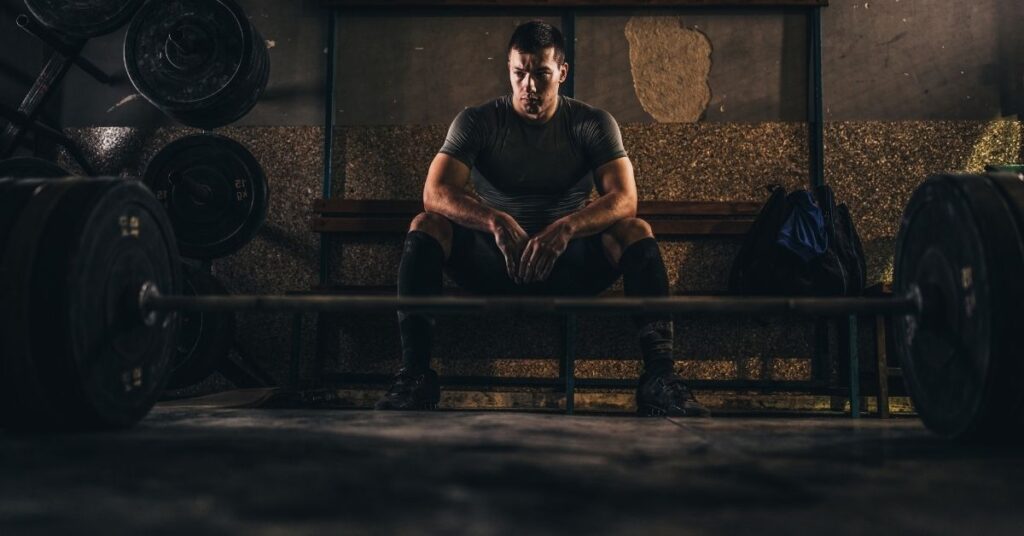
Here are three sumo variations lifters can use to increase their sports specificity, strength, and power, as well as increase the movement integrity of the sumo deadlift.
Deficit Sumo Deadlift
Deficit sumo Deadlifts are a variant that tests the most rugged ranges of motion.
This will increase your pulling strength and help you target your glutes, hamstrings, and hips.
Sumo Deadlift With Accommodating Resistance
To accommodate resistance, one can add bands or chains to increase the difficulty of the lift at the top, middle, or bottom.
Lifters can overcome sticking points.
Chains, for example, make lifters heavier at the top as they fall off the floor.
You can pull off a small amount of weight by loading chains onto a barbell.
However, the weight at the top will be greater.
Your lockout will become stronger.
You can also wrap bands around the tops of power racks and attach the ends to the barbells.
You should load the bar 10-20 percent more weight than you typically lift.
You’ll notice that the load gets lighter towards the top, so you are effectively overloading your deadlift.
Tempo Sumo Deadlifts
Tempo training is possible with the sumo deadlift, including time restrictions or cadences for the various phases.
The different phases.
The lift’s bottom, top, and middle phases are the most important.
You can adjust your tempo to increase muscle time under tension, which leads to more remarkable muscle growth.
Also, it will help you to control your weight.
Should I Do Sumo Deadlifts?
It all depends.
However, it is possible to learn the form by trying different deadlifts.
You may find that trap bar or conventional deadlifts feel good.
Can I Mix Sumo Deadlift And Traditional Deadlift?
Sure.
Sumo deadlifts can even be beneficial for your traditional deadlift.
However, suppose your goal is to become a solid competitive powerlifter or someone who wants to get stronger.
In that case, it may be a good idea not to switch between the two.
Both lifts require mechanical proficiency.
You can only improve your skills by repeating the process over and over.
It’s simple: practice makes perfect.
Is Doing Sumo Deadlifts Cheating?
The short answer is no.
Powerlifters may comment that sumo deadlifts aren’t worth it.
However, they might be just trolling their competitors or, if severe, they don’t know what they are talking about.
Sumo deadlifts provide a slight advantage for most people.
This is why most people are more potent with sumo deadlifts.
However, a sumo deadlift of 500 pounds does not count. It counts.
Is Sumo Deadlift Harder Than Traditional Deadlift?
Sumo deadlifts don’t have to be any more complicated or more complex than traditional deadlifts.
They may be more suitable for someone’s anatomy.
Sumo deadlifts may be easier for those with longer arms and legs than others.
They don’t have to raise the bar as high.
Sumo deadlifts can often be performed with a heavier weight than traditional deadlifts.
Depending on your perspective, this may make them seem harder or more complicated.
Is Sumo Deadlift An Actual Deadlift?
Sumo deadlifts can be as realistic as any other variation of the deadlift.
These deadlifts are a modified version of the traditional deadlift, emphasizing different muscle groups.
However, they are unique because they do not rely on hip hinge movements.
The knee can also initiate them.
Is Sumo Deadlift More Effective Than Regular Deadlift?
Sumo deadlifts don’t do any better than regular deadlifts, so training with both is a great option.
Sumo deadlifts focus more on your glutes or quadriceps than traditional deadlifts, which focus more heavily on the lower back and hamstrings.








